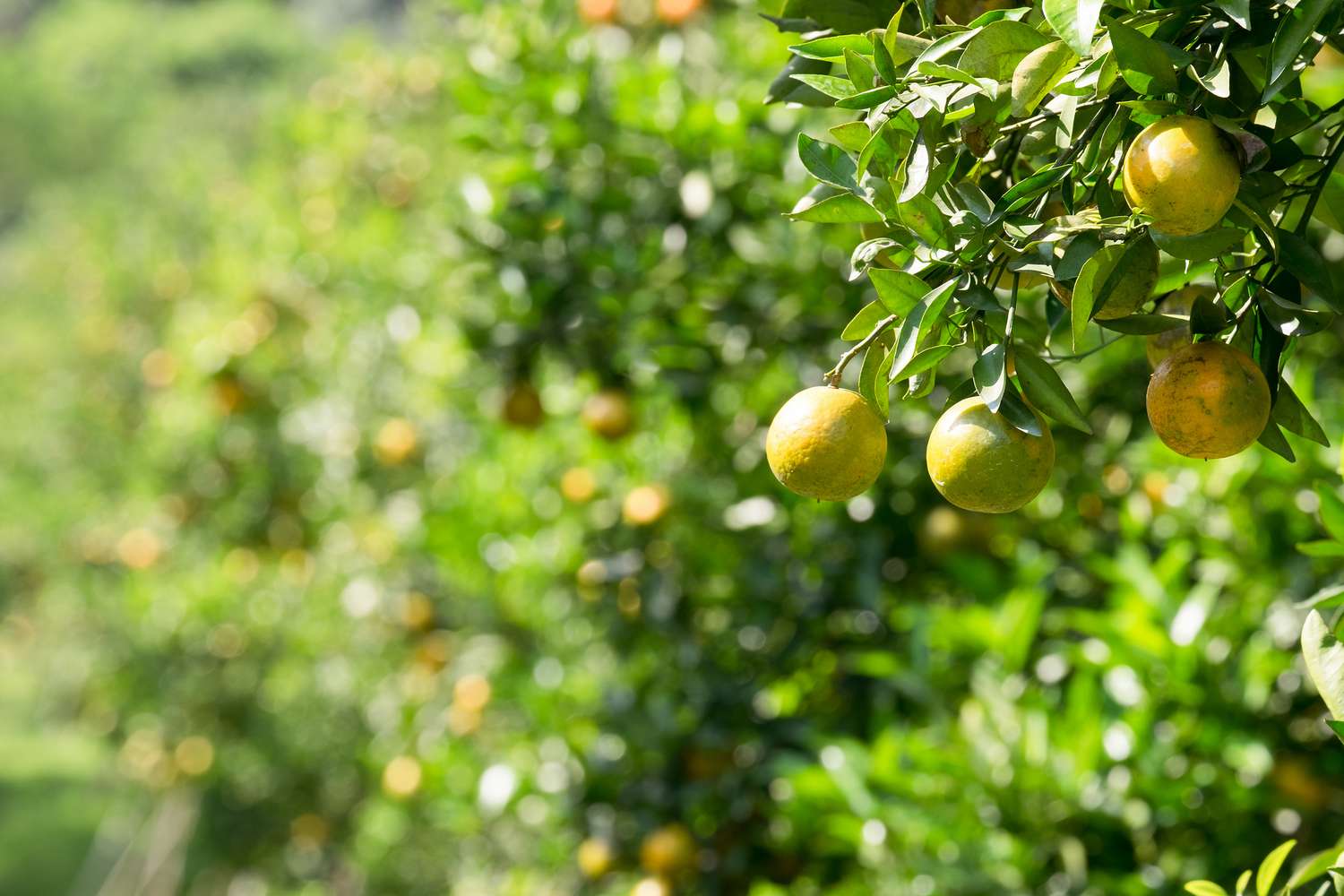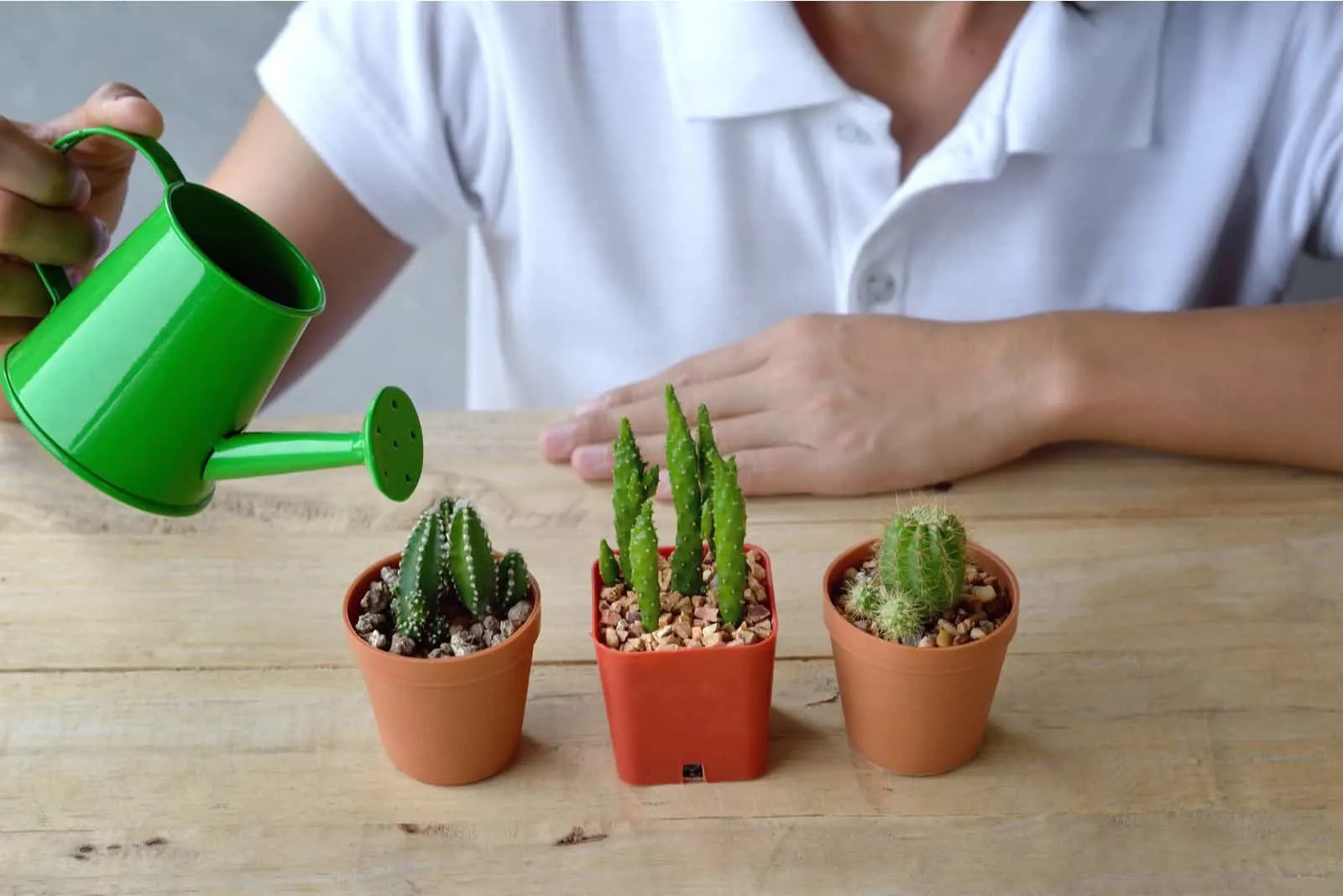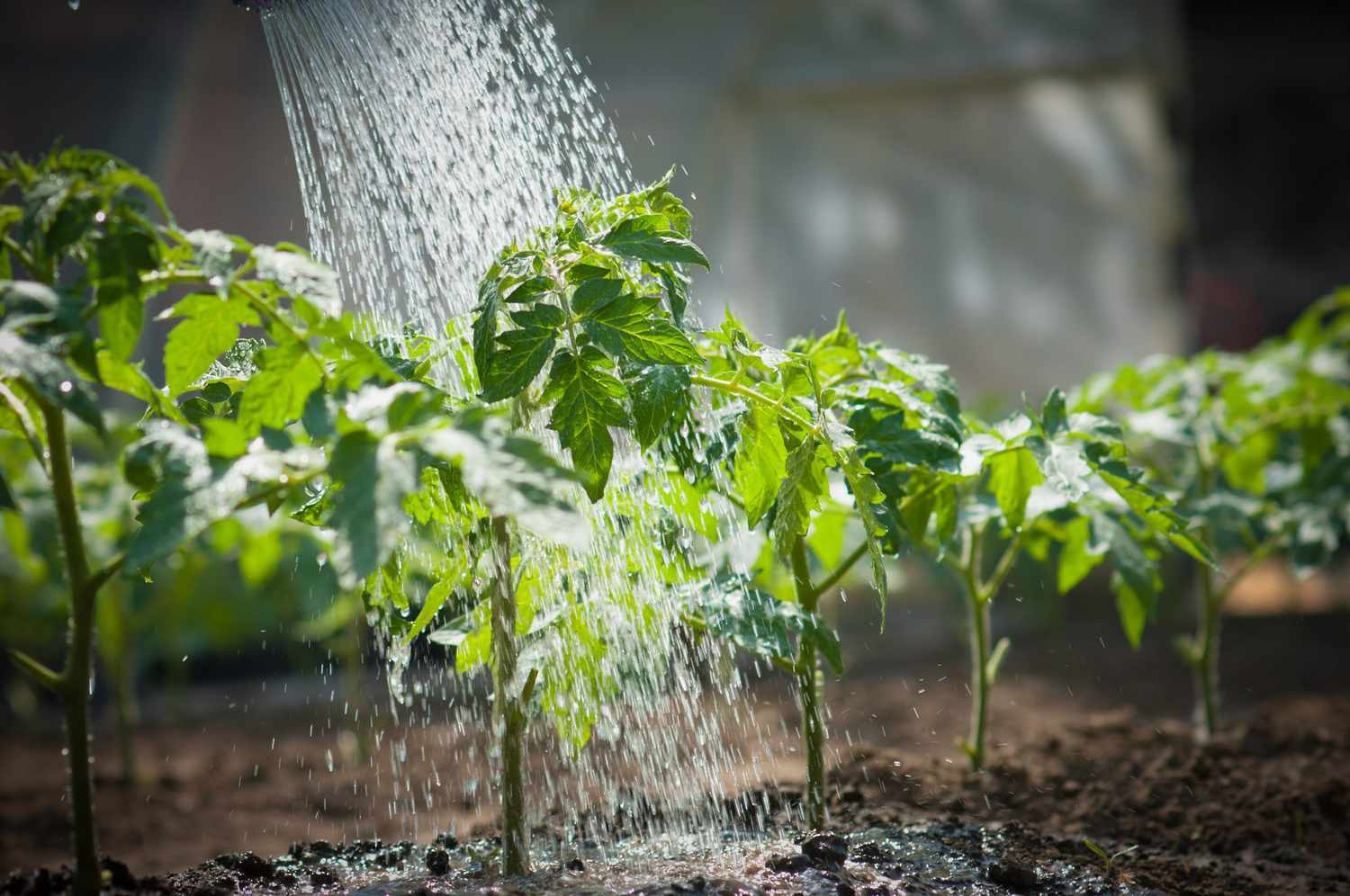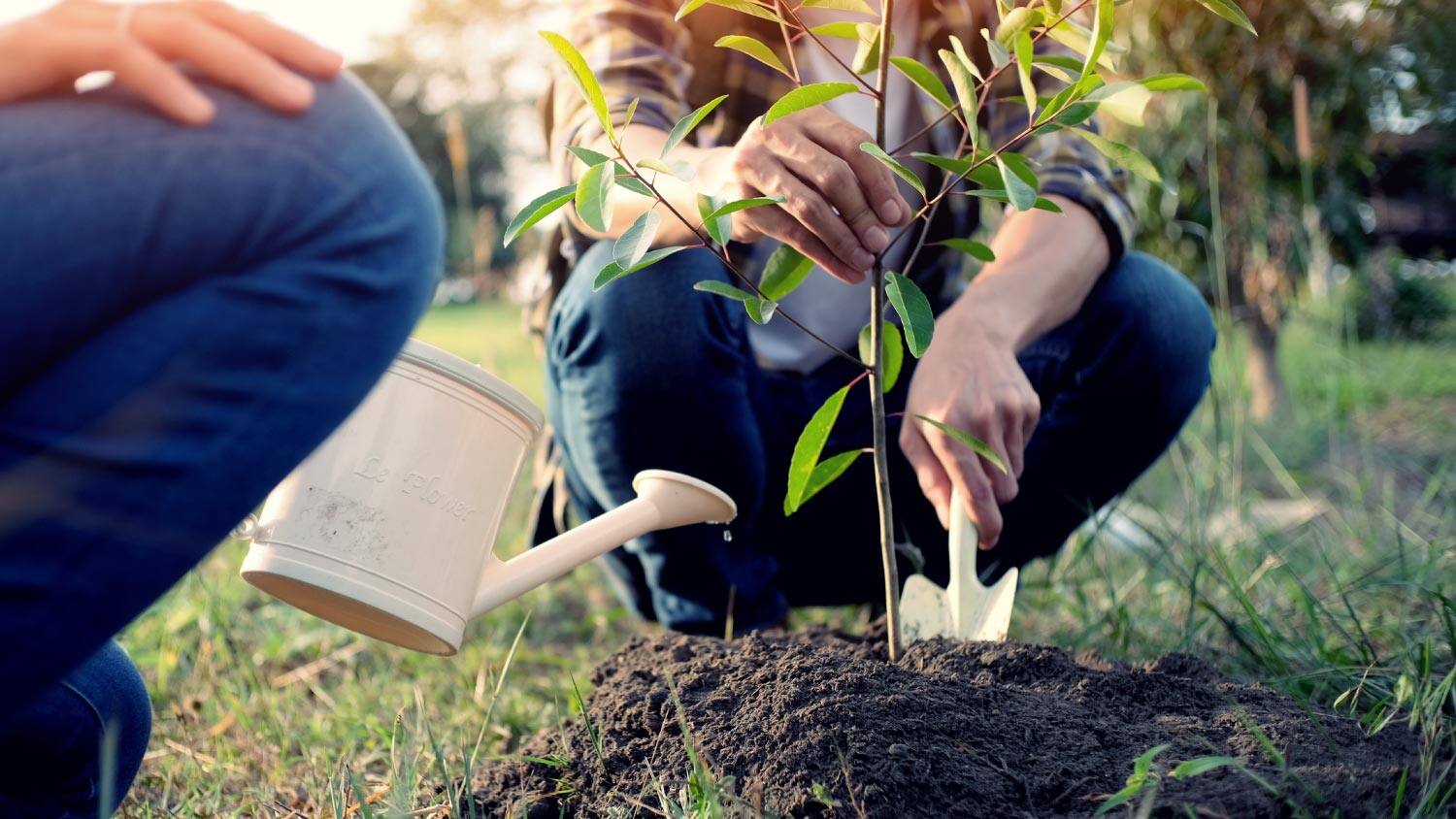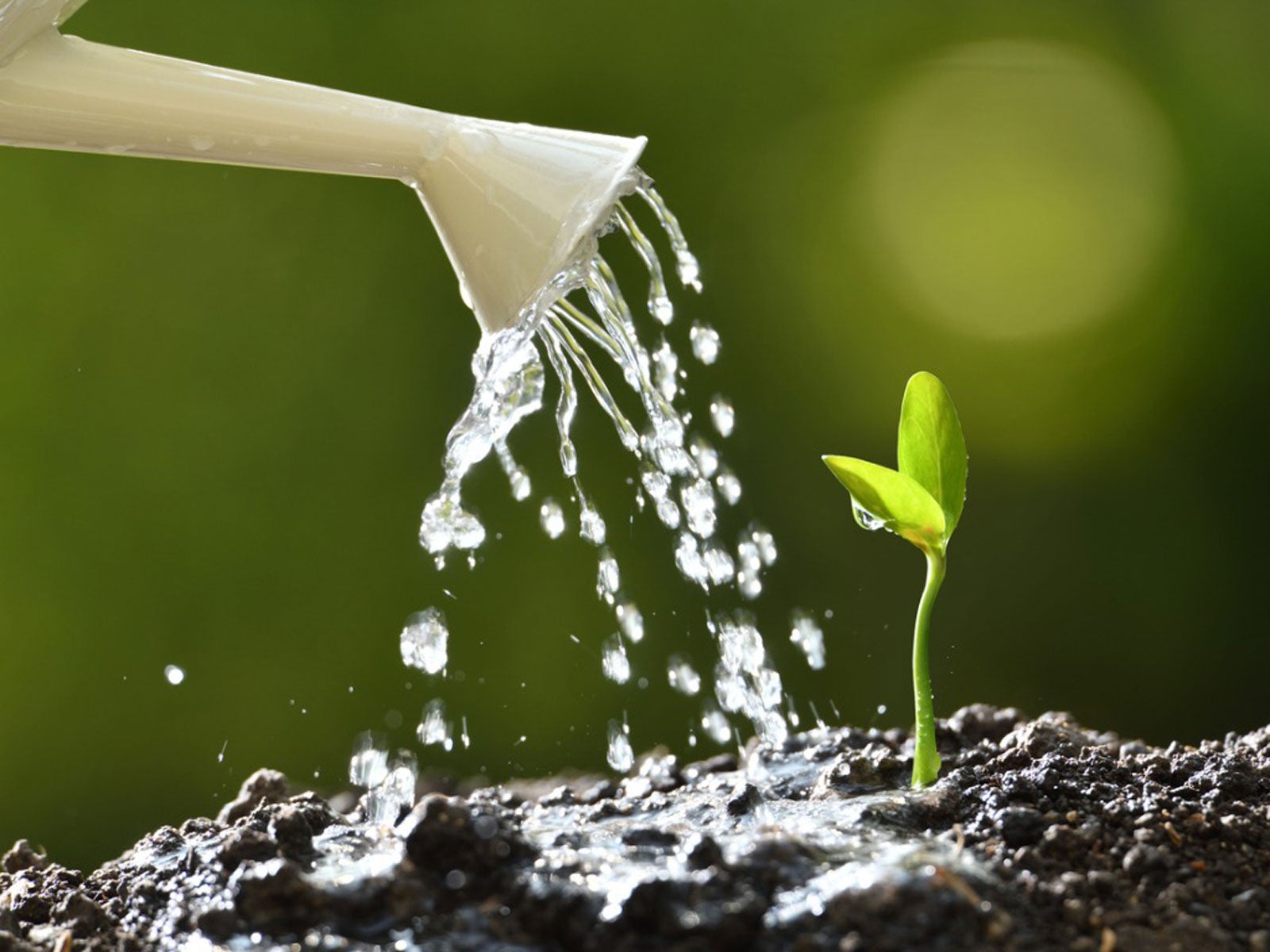Home>Types of Gardening>Ornamental Gardening>How Often To Water Arborvitae After Planting


Ornamental Gardening
How Often To Water Arborvitae After Planting
Modified: January 22, 2024
Find out how often to water arborvitae after planting in your ornamental gardening project to ensure healthy growth and vibrant foliage.
(Many of the links in this article redirect to a specific reviewed product. Your purchase of these products through affiliate links helps to generate commission for Chicagolandgardening.com, at no extra cost. Learn more)
Table of Contents
Introduction
Welcome to the world of ornamental gardening! There are few things as fulfilling as cultivating a beautiful and vibrant garden, and one way to elevate its visual appeal is by incorporating ornamental plants like arborvitae. These versatile evergreen shrubs are not only stunning but also provide privacy and protection to your outdoor space.
In this article, we will delve into the intricacies of watering arborvitae after planting. Proper watering is essential for the healthy growth and development of these plants, and understanding their specific needs will ensure that they thrive in your garden.
Arborvitae (Thuja spp.) is a popular choice among gardeners due to its elegant foliage, compact growth, and tolerance to various soil conditions. Native to North America and parts of Asia, this evergreen shrub belongs to the cypress family and boasts needle-like leaves that range in color from vibrant green to deep emerald.
With a variety of cultivars available, arborvitae offers an array of options to suit your landscaping goals. Whether you’re looking to create a privacy hedge, add structure to your garden, or create a focal point, arborvitae can be a fantastic addition.
Now, let’s explore the watering needs of arborvitae and how you can provide the optimum moisture to ensure their health and vitality.
Understanding Arborvitae
Before we dive into the intricacies of watering arborvitae, let’s first understand the characteristics and requirements of this remarkable plant. Arborvitae, also known as the “tree of life,” is a genus of evergreen conifers that belong to the cypress family (Cupressaceae).
Arborvitae is native to North America and parts of Asia, with several species and cultivars available in the market. The most common varieties in ornamental gardening include the Eastern arborvitae (Thuja occidentalis), Western arborvitae (Thuja plicata), and the Techny arborvitae (Thuja occidentalis ‘Techny’).
These conifers are known for their dense, feathery foliage and popularly used as hedges, privacy screens, and foundation plantings. With their columnar or pyramidal shape, they add structure and elegance to any landscape.
Arborvitae typically thrives in well-draining soil and prefers full sun to partial shade. They are relatively low-maintenance and can tolerate a wide range of soil conditions, including clay and loam. However, it’s important to note that excessive humidity and poorly draining soil can lead to various diseases and problems, such as root rot and fungal infections.
When it comes to size, arborvitae can vary significantly depending on the species and cultivar. Some varieties can reach impressive heights of 30 feet or more, while others stay more compact, making them suitable for smaller gardens and spaces.
In terms of appearance, arborvitae features scale-like leaves that are arranged in flattened sprays. The foliage ranges in color from vibrant green to deep emerald and may take on bronze or golden hues in colder climates.
Now that we have a better understanding of arborvitae, let’s explore its watering needs to ensure its proper growth and vibrant presence in our gardens.
Watering Needs of Arborvitae
Proper watering is crucial for the health and vitality of arborvitae plants. These evergreen shrubs have specific moisture requirements that need to be met in order to ensure their optimal growth and development.
Arborvitae plants thrive best in moist but well-drained soil. While they can tolerate short periods of drought, extended dry spells can lead to stress, yellowing foliage, and even death. On the other hand, overwatering can cause root rot and other fungal diseases.
When establishing new arborvitae plants, it is essential to provide consistent moisture to help them establish their root system. During the first year, regular watering is necessary to encourage deep root growth and ensure the plant’s stability.
A general guideline for watering arborvitae plants is to provide approximately 1 inch of water per week. This can be achieved through a combination of rainfall and supplemental irrigation. However, it’s important to adjust the watering schedule based on the specific needs of your arborvitae and the prevailing weather conditions.
During periods of heavy rainfall, it may be necessary to reduce the frequency of watering to prevent waterlogging and root suffocation. Conversely, in dry periods or hot summer months, you may need to increase watering to compensate for the lack of natural moisture.
One effective watering technique for arborvitae plants is deep watering. This involves allowing water to penetrate deeply into the soil, reaching the root zone. Shallow watering only wets the surface and encourages shallow root growth, which can make the plant more susceptible to drought and stress.
It’s important to note that arborvitae plants in containers or pots may have different watering requirements compared to those planted directly in the ground. Containers tend to dry out more quickly, so regular monitoring and watering may be necessary to keep the soil consistently moist.
Now that we understand the watering needs of arborvitae, let’s explore the specific guidelines for watering these plants after planting.
Watering Arborvitae After Planting
After planting arborvitae, it is crucial to provide proper watering to ensure their successful establishment and growth. The first few weeks are particularly critical, as the plants need adequate moisture to develop a strong root system.
Immediately after planting, thoroughly saturate the soil around the arborvitae to ensure that the roots receive enough water. This initial watering helps settle the soil and eliminates any air pockets that may exist around the roots. Aim for a deep watering, ensuring that the moisture reaches a depth of at least 12 inches.
In the first week after planting, closely monitor the moisture levels in the soil. Depending on the weather conditions, you may need to water every 2-3 days to keep the soil consistently moist. Avoid waterlogged conditions, as excessive standing water can cause root rot.
As the roots become established, you can gradually reduce the frequency of watering, but continue to monitor the soil moisture. Aim to provide deep watering once or twice a week, depending on weather conditions and soil type.
During hot and dry periods, arborvitae may require more frequent watering. If the soil feels dry to the touch, it’s a clear indication that watering is needed. Adjust the frequency and duration of watering based on the specific needs of your arborvitae and the local climate.
Remember that consistency is key when watering arborvitae after planting. Avoid allowing the soil to completely dry out between waterings, as this can lead to stress and potentially harm the plant. At the same time, avoid overwatering, as this can cause root rot and other issues.
Consider using mulch around the base of the arborvitae to help retain soil moisture and regulate temperature. Apply a 2-3 inch layer of organic mulch, such as wood chips or bark, but ensure that the mulch does not come into direct contact with the trunk to prevent trunk rot.
By providing the proper watering regimen to your newly planted arborvitae, you will promote healthy root development and set the foundation for a thriving and beautiful plant in your garden.
Factors Affecting Watering Frequency
Several factors can influence the frequency at which you need to water your arborvitae. Understanding these factors will help you adjust your watering regimen accordingly and ensure that your plants receive the right amount of moisture.
1. Weather Conditions: Weather plays a significant role in determining the watering needs of your arborvitae. Hot, dry, and windy weather can cause the soil to dry out quickly, necessitating more frequent watering. In contrast, cool and moist conditions may require less frequent watering.
2. Soil Type: The type of soil in your garden can affect how well it retains moisture. Sandy soils drain more quickly, while clay soils tend to hold water for longer periods. Adjust your watering schedule accordingly to ensure proper moisture levels in the root zone.
3. Plant Size and Age: Young arborvitae plants typically have smaller root systems and require more frequent watering to establish themselves. As they mature, their root system expands, allowing them to access moisture from a larger area. Adjust your watering frequency as the plant grows.
4. Exposure to Sunlight: The amount of sunlight your arborvitae receives can impact its water requirements. Plants in full sun may experience higher rates of evaporation, while those in partial shade may retain moisture for longer periods. Consider the exposure and adjust watering accordingly.
5. Drainage: Proper soil drainage is crucial for the health of arborvitae. Poorly drained soil retains excessive moisture, leading to root rot and other problems. On the other hand, excessively well-drained soil may require more frequent watering to compensate for the quick drainage.
6. Container vs. In-Ground Planting: Arborvitae planted in containers have different watering requirements compared to those planted directly in the ground. Container plants dry out more quickly, so regular monitoring and watering may be necessary to keep the soil moist.
7. Seasonal Changes: The watering needs of arborvitae can vary throughout the seasons. During the active growth period in spring and summer, plants may require more frequent watering, while in colder months, when growth slows down, watering can be reduced.
By considering these factors and monitoring the moisture levels in the soil, you can adjust your watering frequency to meet the specific needs of your arborvitae plants and create an environment that promotes their health and vitality.
Signs of Underwatering and Overwatering
Proper watering is essential for the health of your arborvitae plants. Understanding the signs of both underwatering and overwatering is crucial in order to adjust your watering routine and prevent any potential issues.
Signs of Underwatering:
- Wilting: One of the first signs of underwatering is wilting. The leaves of the arborvitae may appear droopy and lack their usual vibrancy.
- Dry Soil: Check the moisture level in the soil by inserting your finger about an inch deep. If it feels dry, the plant may need more water.
- Brown or Yellowing Foliage: Inadequate moisture can cause the foliage of arborvitae to turn brown or yellow, starting from the tips or edges of the leaves.
- Leaf Loss: Underwatered arborvitae plants may shed their leaves in an effort to conserve energy and moisture.
- Stunted Growth: Lack of water can hinder the growth of your arborvitae, resulting in stunted or slow development.
Signs of Overwatering:
- Yellowing Foliage: Overwatering can cause the foliage of arborvitae to turn yellow, typically starting from the lower leaves.
- Leaf Drop: Excessive moisture can lead to yellow or brown leaves that eventually drop from the plant.
- Mushy or Smelly Roots: Overwatering can lead to root rot, which is evident by mushy or discolored roots with a foul odor.
- Mold or Fungal Growth: Too much moisture creates a favorable environment for mold and fungal diseases to thrive on the foliage or in the soil.
- Stunted Growth: Just like underwatering, overwatering can also inhibit the growth of arborvitae plants, resulting in stunted or slow development.
It’s important to note that these signs may also indicate other underlying issues, so it’s essential to assess the overall health of your plants and consider multiple factors before making any adjustments to your watering routine.
By paying close attention to the signs of both underwatering and overwatering, you can fine-tune your watering schedule and provide your arborvitae with the optimal moisture levels they need for vibrant and healthy growth.
Tips for Properly Watering Arborvitae
Proper watering techniques can make a significant difference in the health and vitality of your arborvitae plants. Here are some tips to ensure that you water your arborvitae properly:
- Water deeply: When watering, ensure that the water penetrates deeply into the soil to encourage the development of a strong and extensive root system. This promotes resilience and helps the plant withstand periods of drought.
- Use a slow and steady watering method: To achieve deep watering, use a slow and gentle watering method, such as a soaker hose or drip irrigation system. This allows water to be absorbed gradually without causing excess runoff.
- Water at the base, not the foliage: Aim to water the base of the arborvitae plants rather than the foliage. Wetting the leaves can increase the risk of fungal diseases, especially when water is left on the foliage for extended periods.
- Water early in the day: It’s best to water early in the morning to allow the foliage to dry out during the day. This reduces the chances of fungal infections and prevents the development of humid conditions that can promote disease.
- Avoid frequent shallow watering: Shallow watering only moistens the surface of the soil and encourages shallow root growth. Instead, provide deep and infrequent watering to encourage the roots to grow deeper into the soil.
- Use mulch: Apply a layer of organic mulch, such as wood chips or bark, around the base of the arborvitae plants. Mulch helps retain moisture, suppresses weed growth, and regulates temperature fluctuations in the soil.
- Monitor soil moisture: Regularly check the moisture levels in the soil by inserting your finger or a moisture meter into the soil. This will help you determine when watering is necessary.
- Adjust watering based on weather and season: Be mindful of weather conditions, such as rainfall and temperature, as they can impact the moisture requirements of your arborvitae. Adjust your watering schedule accordingly.
- Consider the specific needs of your arborvitae: Different arborvitae cultivars may have varying moisture requirements. Research the specific needs of your variety and adjust your watering routine to meet those requirements.
Remember, maintaining proper soil moisture is essential, but so is avoiding excessive watering. Finding the right balance will ensure the health and vigor of your arborvitae plants, providing you with a thriving and beautiful garden.
Conclusion
Proper watering is key to maintaining the health and beauty of your arborvitae plants. By understanding their specific watering needs and implementing the tips mentioned in this article, you can ensure that your arborvitae thrives in your garden.
Remember to provide consistent moisture to newly planted arborvitae, especially during the establishment period. Deep watering is important to encourage robust root growth and stability. As your plants mature, adjust the watering frequency based on weather conditions, soil type, and other factors that affect moisture levels.
Recognizing the signs of both underwatering and overwatering is crucial in order to make necessary adjustments to your watering routine. By paying attention to the condition of the foliage, soil moisture, and overall plant health, you can avoid potential issues and promote healthy growth.
In addition to proper watering techniques, consider other factors that can impact the health of your arborvitae, such as sunlight exposure, soil drainage, and seasonality. Adapting your watering schedule to these factors will result in vibrant, thriving arborvitae plants in your garden.
Ultimately, maintaining a healthy and well-watered arborvitae garden requires a balance between meeting the plant’s moisture needs without causing waterlogging. With patience, observation, and regular monitoring, you can develop a watering routine that ensures the long-term success of your arborvitae.
So go ahead, take care of your arborvitae with proper watering techniques, and enjoy the beauty and benefits they bring to your ornamental garden.

